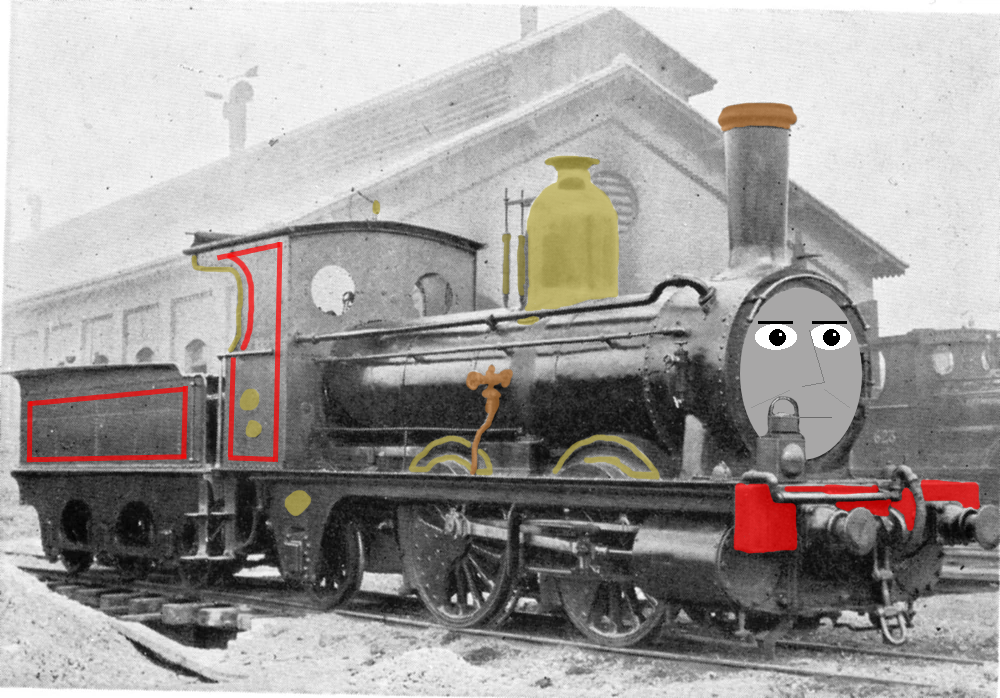HOME | DD
 New-Oban-Productions — Japanese OC: JGR Class 5000 'Kaemon'
New-Oban-Productions — Japanese OC: JGR Class 5000 'Kaemon'

Published: 2023-03-05 09:28:13 +0000 UTC; Views: 1084; Favourites: 9; Downloads: 0
Redirect to original
Description
The oldest of Japan's tender engines and the forerunner of many. Before the D51s, C62s, 8620s, there was him, Class 5000 better known as "Kaemon" (JP: "カエモン", pronounced "Kai-mon").Bio:
Built by Sharp Stewart & Co. in Manchester in 1871 and arrived in Japan a year later with his sibling, whose name has been lost to time. Both became classed as "D1" and numbered as "A" and "B" before becoming No. 11 (Kaemon) and 12. Kaemon gained the honour of being the first tender locomotive in Japan with his sibling as the second. After two more renumberings as "2" and finally as No. 5000, Class 5000. In 1921, after 50 years of service, both Kaemon and No. 5001 were withdrawn but Kaemon's importance was enough to have him stored alongside a Class 3950 2-6-2T Prairie tank (No. 3951) at Shiodome Station, Minato, outside Toyko. His life was nearly ended by the 1923 Kanto Earthquake that would damage a carrier under construction beyond repair and the shed Kaemon and 3951 were in, which collapsed and caught fire. However, due to some "Lancashirian luck" Kaemon was only slightly scratched as the falling shed protected him, while No. 3951 wasn't so lucky.
When WWII broke out and Japan entered, Kaemon (who at this point had almost lost the ability to speak English) was placed into hiding and for his safety but was forgotten about after the Empire of Japan surrendered to the Allies and during the modernisation of JNR starting in the 1950s. In 1960s, steam was being phased out across the world with diesels and electrics and Japan was no exception. In 1968, with several British-built locomotives being withdrawn en masse, Kaemon was rediscovered in shed outside Tokyo by a rather friendly C56 135 (who has a deep respect for the British engines, and becoming the first of his class to master English), who dragged him out into the sunlight for the first time, which was during a yard clean out. It was quite ironic as his discovery was on the 11th August 1968, which was the same date that British Rail retired the last standard gauge steam operations.
Following a restoration into the same livery worn by No. 1 (Class 150), Kaemon was transferred by rail to his new home for preservation in Nagano Prefecture (still known to him as "Shinano Prefecture") with five replica coaches (delivered by C56 135) and placed on static display, where he still remains to this day. His age prevents an operational restoration but is one of the collection's most stand-out engines.
Edit by myself.




















